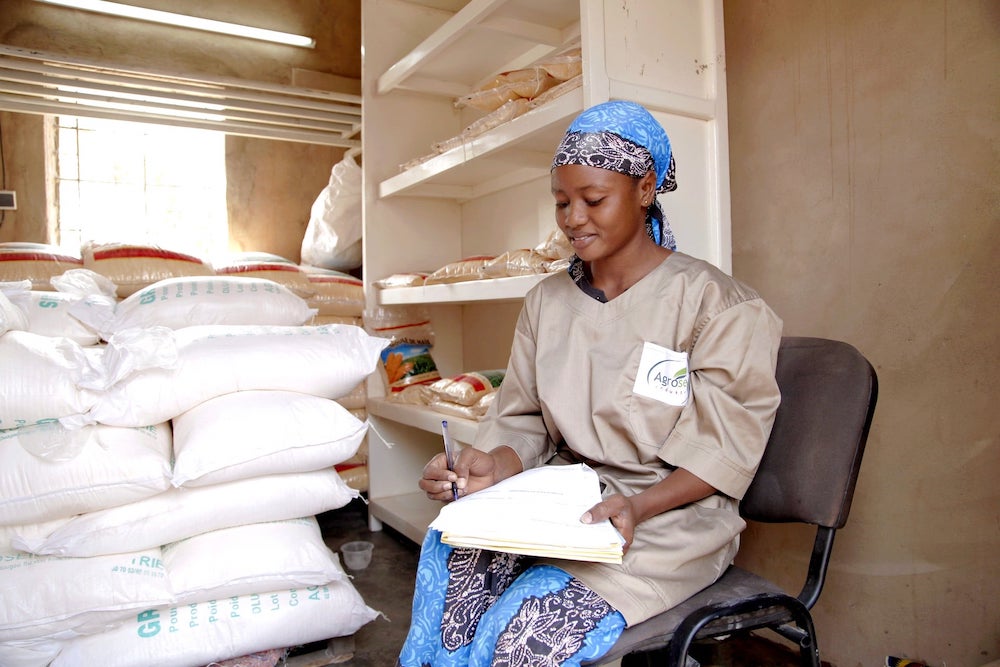Editor’s note: This blog is part of ImpactAlpha’s series, “Seeding Impact,” authored by participants in the Catalytic Capital Consortium (C3) Seeding Learning Labs. Key insights have been published in a C3 Guidance Note (for more, see the executive summary and full report). C3 sponsors ImpactAlpha’s catalytic capital coverage.
Many impact investors strive to be “catalytic.” What does this mean, and how can we be catalytic?
The idea derives from chemistry and is the process of increasing the rate of a chemical reaction by adding a catalyst, or substance, that lowers the amount of energy needed for the reaction to occur. When we strive to be catalytic in our impact investment strategies, we similarly aim to add something to the process that will accelerate the change we seek.
How to do this is evolving. At one time, the very idea of doing ESG—or double/triple bottom line-investing—could be considered catalytic. Now, impact investing is becoming mainstream, enjoying increasing participation by governments, corporates, institutions, family offices, and individuals. In turn, the opportunity for catalytic capital is expanding, and the bar for what it takes to be catalytic—to bring about more and faster change within a growing capital pool—is being raised.
In my view, there are four key dimensions to catalytic investing: 1) financial return targets 2) risk tolerance 3) timing and 4) ecosystem. Charitable institutions, in particular, are uniquely positioned to work creatively across these dimensions, but doing so requires intentional policies and processes.
- Set explicit financial return targets that align with the goal of being catalytic. Of the four dimensions, impact investors are perhaps the most practiced in catalytic return targets. Many investors are comfortable accepting below-market or alternatively structured financial returns in exchange for higher impact returns—for example: leveraging additional dollars or reducing the cost of capital for a specific outcome and/or redistributing benefits across stakeholders and communities.
Foundations are particularly well suited for accepting lower financial returns when doing program-related investments, or PRIs, for which making money cannot be the principal concern. Other institutions have followed suit, though time will tell the extent to which macroeconomic conditions (low interest rates and high levels of liquidity) have contributed to the increasing supply of cheap debt for impact investments.
- Set risk tolerance parameters that align with the goal of being catalytic. A thornier issue for many impact investors is the issue of taking on more financial risk – particularly in tandem with lower financial returns. Ironically, having a catalytic financial target may reduce the ability to take risk. For example, if a modest goal such as preservation of capital is established, taking lower financial returns is easy. But that may constrain risk tolerance, because at the portfolio level, there may not be enough potential upside – money to be made – to compensate for financial risk – money that may be lost.
Without explicit permission to take financial risk, investors in this position are incentivized to provide low-cost debt but in a senior position, or otherwise invest with very little downside – increasingly common and thus decreasingly catalytic forms of investment. This approach may also be at odds with a goal to support emerging firms and social justice-oriented investments in particular, because downside protection for the investor shifts risk to the investee, who may be in a worse position to absorb it.
- Ensure internal processes support being catalytic. Being flexible and/or going first can be critical to being catalytic. This of course relates to risk tolerance, because being quick on timing can mean absorbing more uncertainty, operational risk, etc. Institutional processes related to diligence, documentation, legal and approval also support or work against timing considerations.
- Understand one’s place in the ecosystem. Clearly, the most catalytic investors leverage their own strengths and positions, such as expertise, size, networks, and unique policies and processes. Intermediaries play a critical role in coordinating ecosystems, and collaborations among investors are powerful, especially when similar or complementary roles are well understood.
Catalytic carveout
There are many approaches to addressing these interrelated dimensions with an eye toward being more catalytic. At The Grove Foundation we have shaped a $15 million carveout (within our broader, 100% mission-aligned portfolio) that aims to align tightly with our programmatic/grantmaking objectives and to serve a catalytic role in advancing our mission within the investment space. This carveout has a financial return target of 80% of capital invested written into our investment policy. This gives us explicit permission to take lower financial returns and accept significant financial risk when the potential mission upside is large.
That capital return target also allows us to work along the continuum between grants and investments, where philanthropic institutions have unique competency. As a result, we have been able, for example, to participate early-on in junior tranches of blended finance vehicles; provide 1% loans to high-risk startups; and use recoverable grants for breakthrough strategies, all in line with our programmatic goals. We have found our carveout policy guidance, with the 80% capital return target, to be our most significant catalytic tool.
Also undergirding our catalytic carveout are several processes aiming to bolster our ability to strategically time our work. These include tight collaboration with the program team and other investors; rolling, frequent and flexible investment committee meetings (including rapid email approval when appropriate); the ability to right-size diligence efforts and outputs, allowing lighter-touch approaches in the right circumstances; and access to catalytic-minded legal resources (who work toward solutions that creatively balance mission and financial considerations and don’t over-mitigate downside risk).
We are constantly learning from collaborators and colleagues about the greater ecosystem and where we can make a difference. Sometimes we lead, other times we follow or work in lockstep with co-investors or at the advice of trusted intermediaries. We rarely write the largest checks, so leveraging other strengths (such as the ability to go first and absorb more risk) and working in explicit collaboration have been key.
We learn from every deal and are constantly reevaluating and revising our policies and processes. This is key to advancing our mission and is necessary if we want to keep up with the rising bar.
Rebekah Saul Butler is the co-executive director and chief investment officer of The Grove Foundation.









